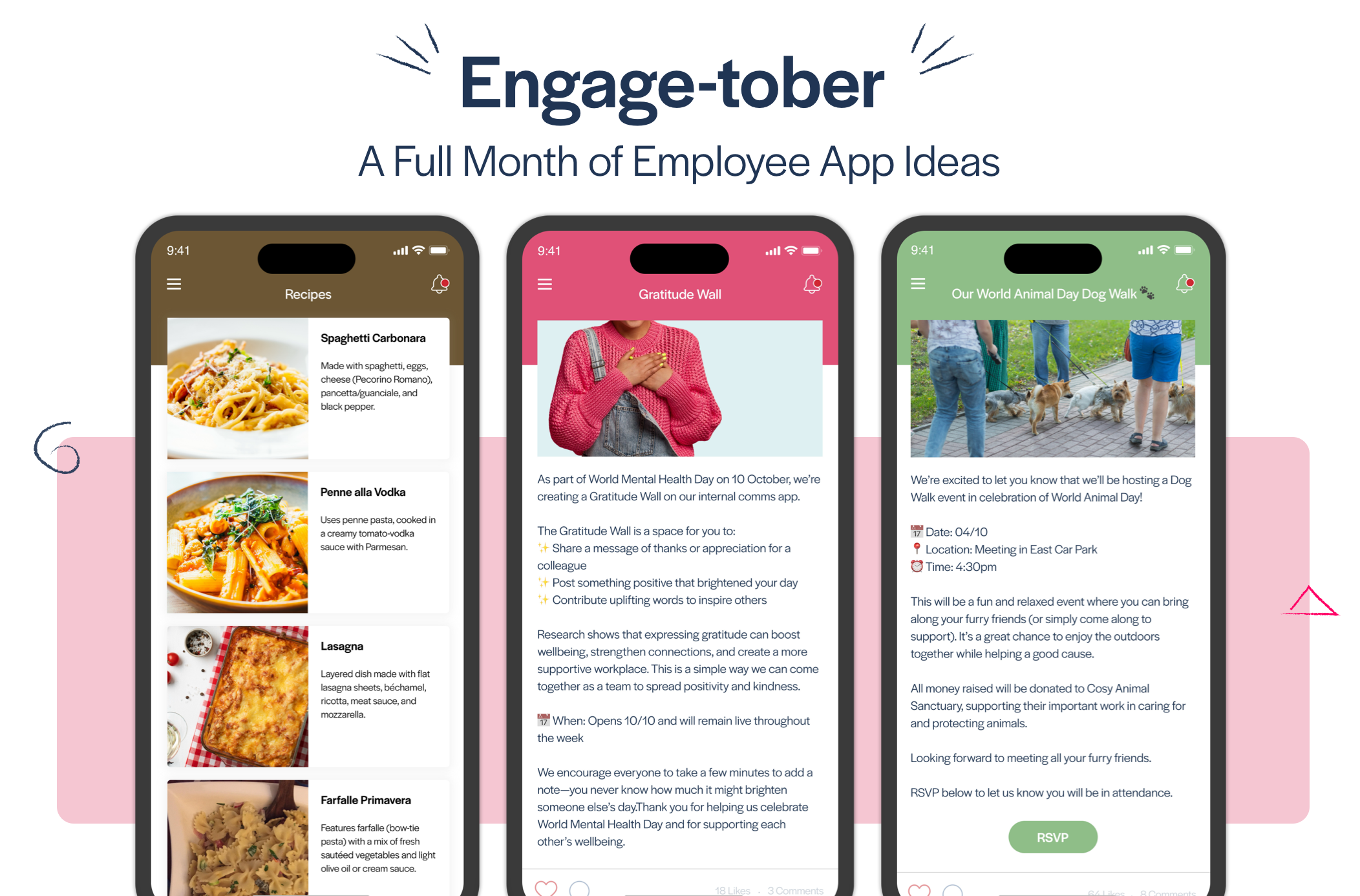
Blog
What Will Employee Engagement Look Like in 2022 & Beyond?
Thrive.App CEO, James Scott, reflects on how employee engagement has changed as a result of the pandemic, and what these changes mean as we head into a new year and way of working.

It has been almost two years since the government advised people to work from home, and yet there is still so much debate surrounding the everyday working life both now and in the future.
Is working from home just a phase we will grow tired of? Will offices ever return to full capacity? What about younger generations and their career development - what impact does working from home have on them? These are all questions that we hear time and time again, and yet it is still very much front of mind for many, but especially to those working in HR.
A real concern that has risen from the pandemic is how to combat employee engagement - particularly given all the discussion about The Great Resignation and employee burnout, which is causing many people to realign their careers and jobs in search of greater work life balance. Not to mention ‘generation goldfish’ - a term that was emerging pre-pandemic but has been exacerbated by our increasingly digitally dominated lives, meaning they are less likely to be loyal to a job or career path.

There’s no denying the cold hard fact that it is getting increasingly harder to keep employees engaged and satisfied within their job role when they are not based in the office, and the truth is, it’s only going to get more difficult for companies that don’t understand or realise the potential damage that a lack of employee engagement can have.
However, the flip side of this, is that this shift to home and hybrid working means employers have arguably more choice when it comes to the talent pool as potential candidates are not limited to location when it comes to looking for work. Furthermore, the ability to work from home enables many people to be more productive. A recent survey by Finder found 83% of employees feel they do not need an office to be productive.
But it's not as simple as simply asking employees to work from home or in the office and expecting them to perform in the same way. There are a few critical considerations that business owners must take, in order to ensure their staff are supported in every way in this new way of working.

Increase transparency and clarity between employers and employees
Having a policy in place that encourages employers to share critical updates from the business side with employees helps to give employees a sense of purpose within their role. After all, we all want to feel like the work we are doing is truly making a difference. But with a dispersed workforce, transitional means, such as ‘all hands’ meetings, can be harder to facilitate. Consider technology your friend in this situation, as it enables updates to be shared with employees in real time, whilst respecting their preferences on whether they are in the office or working remotely.
The need for clarity amongst employees is another key challenge that employers now face. One of the biggest realisations that many people have had over the last year is that they cannot expect employees to use a multitude of different systems for different aspects of work. It is often hard enough to encourage people to download an app for one aspect of work, without making it clear what the tangible benefits for them will be. This is especially challenging for larger workforces.
As the use of technology grows even more in 2022, employers and managers need to make the benefits of using any modern technology noticeably clear and outline the benefits for everyone rather than for the company. For example, giving employees the ability to access payslips and book holidays alongside the workflow and communications side, will help encourage them not only to download the technology enabling this, but to be more engaged in all aspects of what the technology has to offer as it incorporates many different systems into one place.

Challenges with the changing labour landscape
In 2021, a huge issue arose with a reduction in the number of overseas workers available in the UK, as a result of Brexit and the ongoing pandemic. Certain industries, for example, meat production and food processing, have found it extremely difficult in the past year to hire staff and have been competing against each other for workers.
This is a challenge that needs addressing in 2022. With employees being fewer and far between, there’s a much higher need from these industries to connect with their workforces and work to retain them. The onus is on businesses to do anything they can do to engage their employees. Making special allowances like automatic language translations within communications can help employees feel valued and part of a team that is understanding of their challenges.
This is especially important at a time when good, skilled workers are hard to find, but the demand from consumers continues to rise. Employers need to stand out from the crowd, onboard good people and keep them. Keeping employees engaged within their work is a vital part of that.
Fundamentally as humans we do not just respond to money, we respond to collaboration with other humans. With the ever-growing hybrid and remote working landscape, businesses will experiment with different ways to foster the team spirit, which goes far beyond mission statements and talking about values and culture. None of us know the answer, but those companies that are really starting to think and work on it now are the ones that will find success in this moving forwards.

Shift in employee power
As a result of the shift to remote/hybrid working, many people are aligning their personal visions and purposes with their job much more than they used to. Many desk-based workers can now work for any company, anywhere in the world, which means the focus is less on the location or the paycheck that comes from the job, and more on the company values, how they feel about their work and how appreciated they are within a team.
This is something I don’t think will fade this year, and the battle for skilled workers will continue. There is a need for businesses to focus on their employee experience and staff wellbeing to avoid losing valuable staff members to other companies that are offering more these areas.

Bad management will be exposed
There’s been a lot of talk throughout 2020 and 2021 that working from home allows people to hide away but, actually, I see a different issue arising here. I believe that the continuation of hybrid and remote working will expose those managers that were relying on having their teams in front of them.
Being a manager means getting to know staff, building relationships, and solving problems effectively. We are all human beings that need to be treated in an empathetic way and this will highlight the managers who are not so good at the human element, because a lot more work is needed to build up a strong and trusting relationship when teams are separated.
It's not just about being good at managing people and processes that makes a good manager but connecting with people focusing on their strengths to achieve common goals. It’s about listening to them, valuing their feedback and opinions, and creating teams with the same vision and goals.. My hope is that as we continue to work in a hybrid or even remote way, managers and employees will raise their game, and not be afraid to expose issues that were there anyway. This will then enable them to make positive changes and improve things for the long term.

What now?
The world of work as we knew it has changed dramatically, and if the last two years are anything to go by, then there’s absolutely no way of knowing what this year will bring. But what we can do is take learnings from the last two years, and enable them to inform our decisions moving forwards, as the world begins to look more and more like it did before 2020.









